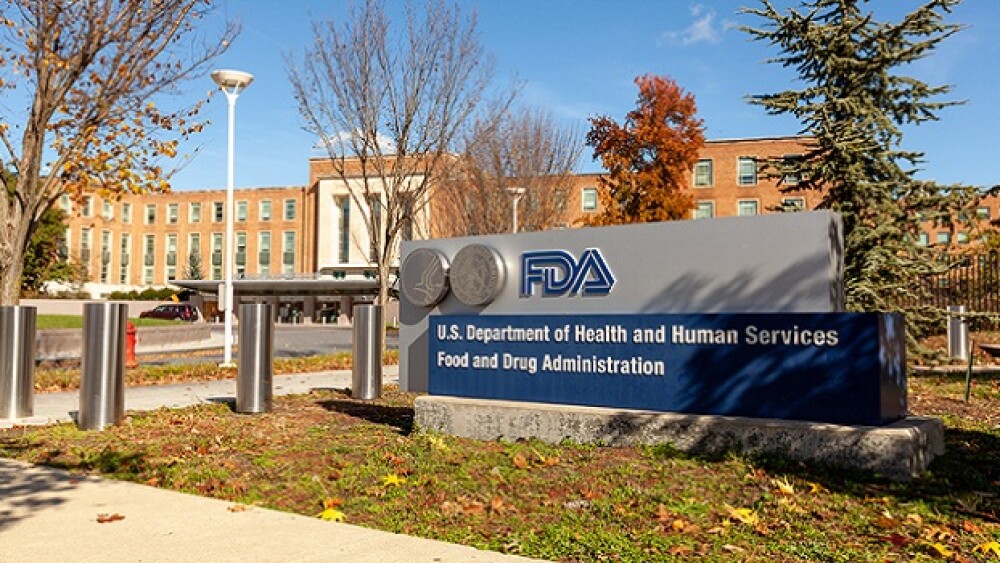Visus Therapeutics Inc., a clinical-stage biopharmaceutical company focused on developing multi-targeted ophthalmic therapies for indications in the front and back of the eye, today presented key topline data from the pivotal Phase 3 BRIO-I clinical trial.
BRIMOCHOL™ PF met its prespecified FDA primary endpoint for binocular near visual acuity across multiple time points, starting at hour 1, versus active controls, and was well-tolerated with no significant adverse events.
BRIMOCHOL™ PF achieved a statistically significant reduction in pupil size at all time points out to 10 hours, and statistically significant improvement in distance vision at 8 hours, compared to its active controls.
BRIO-I study subjects reported greater effectiveness of BRIMOCHOL™ PF over its active controls. Patient-Reported Outcome Measures reported the duration of BRIMOCHOL™ PF to be “just right” and expected to use the drop approximately 5 days a week.
SEATTLE & IRVINE, Calif.--(BUSINESS WIRE)--Visus Therapeutics Inc., a clinical-stage biopharmaceutical company focused on developing multi-targeted ophthalmic therapies for indications in the front and back of the eye, today presented key topline data from the pivotal Phase 3 BRIO-I clinical trial. The study evaluating the safety and efficacy of BRIMOCHOL™ PF, a preservative-free ophthalmic solution for the treatment of presbyopia, met its primary and secondary endpoints.
BRIMOCHOL™ PF successfully achieved the prespecified U.S. Food and Drug Administration (FDA) primary endpoint based on the proportion of subjects achieving >15 ETDRS1 letter gain in Binocular Near Visual Acuity (BUCNVA) without a loss of ≥5 letters at distance across all time points through Hour 6 (carbachol p=0.006; brimonidine p=0.039).
“With the completion of our BRIO-I study and positive Phase 3 data in hand, we see a clear pathway forward,” said Ben Bergo, co-founder, and chief executive officer at Visus Therapeutics. “We believe the success of the study represents a strong opportunity to meet the market need for a true once-daily product with a very favorable tolerability profile.”
BRIMOCHOL™ PF is the first fixed-dose combination product to achieve statistically significant “contribution-of-elements” in presbyopia, an FDA requirement for a fixed-dose combination product. BRIMOCHOL™ PF is also the first fixed-dose combination product to achieve prespecified EU and UK primary endpoints from 0.5 to 8 hours duration (carbachol p=0.003; brimonidine p=0.001) and out to 10 hours (carbachol p=0.004; brimonidine p=0.001). BRIMOCHOL™ PF also demonstrated statistical significance in prespecified secondary endpoints in (1) proportion of subjects achieving a 10-letter gain in letters read at near distance, and in (2) proportion of subjects achieving at least 20/40 at near visual acuity. Importantly, there was also a statistically significant gain in distance vision of 2 letters at 8 hours versus active control, carbachol (p=0.047), compared to baseline at all time points (p<0.001).
“We are very pleased by the BRIO-I topline data demonstrating a rapid and durable improvement in near visual acuity and clear contribution-of-elements with BRIMOCHOL™ PF performing better than each of the individual components separately,” said Rhett Schiffman, M.D., M.S., M.H.S.A., co-founder, chief medical officer and head of research and development at Visus Therapeutics. “The contribution of brimonidine on the overall performance of BRIMOCHOL™ PF is most clearly shown in the objective pupillometry results that show clinically and statistically significant reductions in pupil size over the individual therapies at all time points from 30 minutes out to 10 hours (p<0.001). Importantly, there is a gentle wearing-off of this miotic effect over 10 hours that is still sufficient to provide clinically meaningful improvements in visual performance over a full workday, while minimizing the likelihood of nighttime vision difficulties that can occur if miosis lasts too long. The appeal of this profile was reflected by the subjects in their masked, self-reported assessments who rated the duration of BRIMOCHOL™ PF, on average, as ‘just right’ and reported that they would expect to use BRIMOCHOL™ PF approximately 5 days a week.”
BRIMOCHOL™ PF was well-tolerated with headache rates of less than 10% and no treatment-related serious adverse events were reported. There were no discontinuations due to adverse events.
“I’m very excited to see there was no trade-off between duration and tolerability with BRIMOCHOL™ PF,” said Eric Donnenfeld, M.D., Visus Board of Directors member and Chair of the Company’s Medical Advisory Board. “Based on my own experience that is supported by market research, patients with presbyopia want a comfortable, once-daily eye drop that can improve near vision throughout the workday. These study results show that BRIMOCHOL™ PF, if approved by the FDA, has the potential to be a treatment option for the millions of people living with age-related loss of near vision.”
“Eye drops are an emerging and exciting treatment option for patients with presbyopia,” added David Evans, O.D., Total Eye Care, Memphis, Tennessee. “BRIMOCHOL™ PF provides hope that clinicians will soon be able to satisfy the currently unmet need of a well-tolerated, once-daily reversible treatment for presbyopia for our patients.”
Topline results from BRIO-II, an ongoing Pivotal Phase 3, 6-month plus 6-month safety and efficacy interim study are expected in 2H 2023. Following the read-out of the vehicle-controlled BRIO-II, it is the Company’s current expectation to file a New Drug Application (NDA) with the US FDA in 2H 2024.
About the BRIO-I Study
BRIO-I is a 3-arm, multicenter, randomized, double-masked, crossover safety and efficacy study of BRIMOCHOL™ PF (carbachol/brimonidine tartrate fixed-dose combination) topical ophthalmic solution vs. carbachol monotherapy topical ophthalmic solution vs. brimonidine tartrate monotherapy topical ophthalmic solution in subjects with emmetropic phakic or pseudophakic presbyopia (NCT#: NCT05270863). The study enrolled 182 subjects, 45-80 years of age, across 15 sites in the United States.
About BRIMOCHOL™ PF
BRIMOCHOL™ PF is an investigational drug designed to be a once-daily eye drop to correct for the loss of near vision associated with presbyopia. BRIMOCHOL™ PF is a combination eye drop with a proprietary and patent-protected formulation that combines carbachol (a cholinergic miotic agent) and brimonidine tartrate (an alpha-2 agonist), two well-studied and FDA-approved medicines. Carbachol produces a “pinhole effect”, which reduces the size of the pupil and allows only focused light rays to reach the retina, thereby sharpening images and improving depth of focus. The addition of brimonidine to carbachol is designed to provide several benefits, including a greater and longer duration of the pinhole effect and a lower incidence of the side effects typically induced by miotic agents, particularly among those patients with ocular redness where brimonidine is known to temporarily relieve redness.
“Presbyopia poses a significant and ongoing impact on the quality of life for our patients,” said Herb Kaufman, M.D., Ph.D., the inventor of Brimochol and early pioneer of multiple novel therapies and diagnostic modalities in ophthalmology, including antiviral and antifungal treatment for corneal infections, bandage contact lenses, eye bank storage to enable corneal transplants, specular microscopy of the corneal endothelium, laser vision correction and timolol for glaucoma among many others. “I began this work more than a decade ago and along with my ex-fellow, Almamoun Abdelkader, M.D., conducted and published several studies showing the potential benefit of this approach in treating presbyopia. It is gratifying to see this becoming a reality. A once-a-day solution that is comfortable and effective, can offer a real option for subjects whose quality of life is impacted by their age-related loss of near vision.”
About Presbyopia
Presbyopia is the loss of near vision associated with aging, making it difficult to perform tasks like reading fine print. It typically begins when adults are in their 40s and becomes almost universal by age 502. Presbyopia impacts billions of people globally with approximately 128 million adults affected in the U.S. alone.3,4 Reading glasses are the most common solution for near-vision correction. However, many people find glasses inconvenient or prefer not to wear them for aesthetic reasons.
About Visus Therapeutics
With offices in Seattle, Wash., and Irvine, Calif., Visus Therapeutics is a clinical stage biopharmaceutical company focused on developing multi-targeted ophthalmic therapeutics for the front and back of the eye. The company is developing novel, pupil-modulating therapeutics designed to correct the loss of near vision associated with presbyopia. In parallel, Visus is advancing its pipeline of early-stage ophthalmic drug candidates engineered to preserve and restore visual function associated with the leading causes of vision loss including cataract and presbyopia, ocular surface and corneal disease, glaucoma, and age-related macular degeneration. Visit: visustx.com and follow us on LinkedIn, Twitter, and Instagram.
1 ETDRS = Early Treatment of Diabetic Retinopathy Study
2 U.S. Census Bureau. Retrieved May 1, 2023, from http://www.census.gov.
3 Zebardast et al. The Prevalence and Demographic Associations of Presenting Near-Vision Impairment Among Adults Living in the United States. Am J Ophthalmol. 2017; 174:134-144.
4 U.S. Census Bureau. Table 9. Washington: Population Division. 2014.
View source version on businesswire.com: https://www.businesswire.com/news/home/20230504005453/en/
Contacts
Business & Biotech Press
April Dovorany
April.Dovorany@PorterNovelli.com
(317) 645-8665
Investor Relations
Paul Sagan
Psagan@lavoiehealthscience.com
(617) 865-0041
Eye Care Trade Press
Michele Gray
michele@mgraycommunications.com
(917) 449-9250
Source: Visus Therapeutics Inc.





